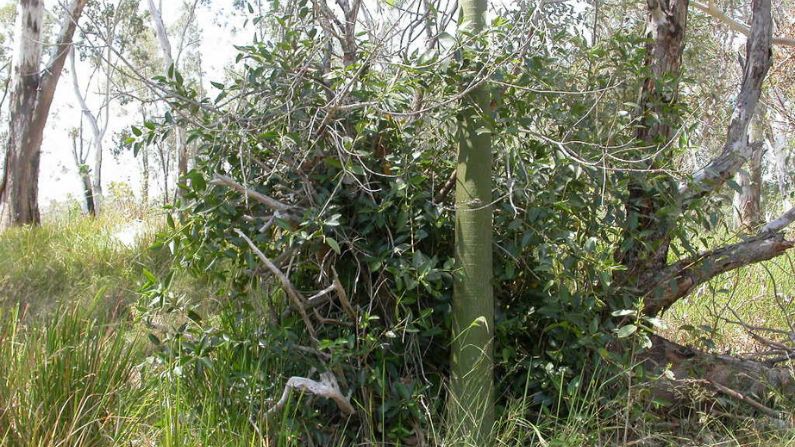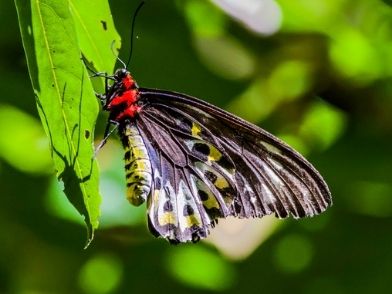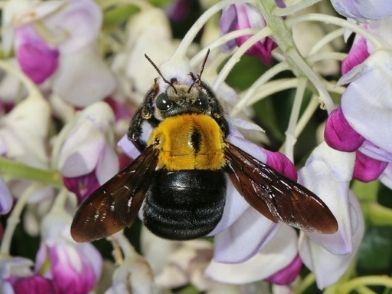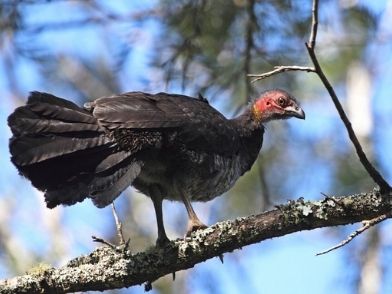Boggomoss snail
© Canva NFP
The Boggomoss snail (Adclarkia dawsonensis) is an exceptionally rare Queensland endemic species with only two known populations existing in the Dawson Valley near Taroom. One of these populations occurs on a Boggomoss (aquifer-fed moist environment) on Mt Rose Station and the other as a series of sub-populations in the riparian environments of the Dawson River.
Quick facts
Boggomoss snail
OTHER NAMES:
Dawson Valley snail
SCIENTIFIC NAME:
Adclarkia dawsonensis
RECOVERY PLAN:
Recovery plan for the boggomoss snail
Adclarkia dawsonensis (2017)
Camaenidae
QLD QLD CONSERVATION STATUS:
Endangered
QLD NATIONAL CONSERVATION STATUS:
Critically Endangered
Did you know?
The boggomoss snail s a medium-sized snail characterised by a relatively thin, semi-transparent shell. It survives dry periods by sealing to the underside of logs and leaf litter.

Boggomoss snail habitat.
Threats to the boggomoss snail
- Proposed development of the Nathan Dam on the Dawson River, north-east of Taroom. Changes in river flow as a result of damming could cause drastic alterations in the local climate, resulting in drier, hostile conditions, unsuitable for the boggomoss snail.
- Predation from introduced mice and rodents.
- Fires.
- Exotic weed invasion.
- Hydrological changes.
- Damage to riparian zones by stock and feral animals such as pigs.
Distribution
The boggomoss snail is found in South East Queensland along the Dawson River between Taroom and Theodore. It is considered that the Brigalow communities which once flourished on the alluvial black soils in this region formed the historical core of the snail’s distribution. Most of these communities have since been cleared for agriculture and cattle grazing and the snail is now largely restricted to the moister environments of riparian zones, and some boggomoss habitats that remain on these alluvial flats. Here it prefers microhabitat of deep, damp layers of leaf litter particularly around the base of trees such as eucalypts and sandpaper figs. These strict habitat requirements confine the snail’s distribution to an area less than 10km2.
Although riparian environments are extensive, the preferred microhabitats the snail requires (deep, damp litter) are largely lacking. Accumulation of such litter is made difficult by the perennial flooding events which tend to scour the riparian understorey.
Unfortunately, these areas are not protected and are continually threatened by anthropogenic influences such as clearing, cattle grazing and agriculture. These modifications to the area alter the surrounding environment making it drier and potentially inhospitable to the snail. The fragility of the snail’s shell suggests this animal may be particularly sensitive to habitat modification and unable to survive in altered conditions. It has been estimated that there has been a reduction in population numbers of at least 80-90 per cent in the past decade due to reductions in suitable habitat.
Population estimates
The continued protection of these populations is critical to the survival of the species, with fewer than 350 individuals estimated to reside at the Mt Rose Station Site. Unfortunately, population estimates along the Dawson River are problematic, with only itinerant individuals having been discovered at a few sites, despite intensive searching. Regrettably, earlier surveys were optimistic in their predictions of species numbers along the Dawson River and most likely overestimated these populations. Despite populations of the Boggomoss snail being known to be in such dire conditions, the species was only formally recognised in 2006 when it was listed as critically endangered.
Description
- The Boggomoss snail belongs to the speciose family Camaenidae and is a relatively small and fragile organism with a thin semi-transparent yellow to light brown flattened shell and a light brown body.
- Shells of mature individuals are approximately 26mm wide and 16mm high.
- Often black blemishes can be observed through the shell; these are markings on the roof of the animal’s lungs.
Life history
Little is known about the life history of the boggomoss snail with the majority of its ecology being inferred from other terrestrial Australian pulmonate snails. It is presumed the life span of the snail is somewhere between 5 to 15 years. It is further assumed that the snail takes 2 years to reach adult maturity.
The snail is a weak sealer, clinging loosely to the underside of logs and other forest debris. Subsequently, it does not produce an epiphragm (a calcium impregnated mucal plug) unlike a number of free sealers that lie in the soil.
Like the great majority of snails this snail is a nocturnal species, reserving most of its activity for the wetter parts and the wear and aestivates (= hibernates) during the drier months by sealing to the underside of logs.
Food and food plants
- The boggomoss snail’s diet is unknown but considered to be similar to that of other Queensland camaenid land snails, feeding on decaying organic matter, microalgae and fungi.
More information
Reports and publications
- Environment Protection and Biodiversity Conservation Act 1999 – Section 269A – Instrument Adopting Recovery Plan (Boggomoss Snail) (21/06/2017) (Commonwealth of Australia, 2017g) [Legislative Instrument]
- Boggomoss snail Information from the Threatened Species Scientific Committee




